For a really excellent laundry, it is advisable to add a specific additive to the normal washing cycle, depending on the result you want to obtain. In effect, by using the right ADDITIVE, it is possible to easily obtain soft, clean and bright garments, towels, underwear and home décor fabrics.
ADDITIVES = substances\products that are added to the wash to obtain specific qualities or improve its features.
Additives must be added to the normal washing cycle, which already contains the suggested amount of standard products, at “the right time”. In effect, each additive carries out its action and effectiveness at a precise moment of the wash. Additives should be used with caution, because if they are added at the wrong time, they may become useless and in some cases they may even impair the effectiveness of the wash.
A typical example of incorrect use in the washing phase concerns starching or water-proofing additives. This type of additives has to be used in the last phase of the wash, that is to say in the last rinse, because if they are used at the beginning of the process, the active ingredient is lost (during the various rinses and spin cycles), thus leading to a remarkably worse (and sometimes almost non-existent) result, if compared to the use in the last rinse (correct phase of use).
Another example is related to the use of bleaching agents (containing oxygen or chlorine), which must be used at the right temperature and in a specific phase of the wash, because if they are used improperly, they may interfere with the detergents or in the worst case they may not be activated. If so, the product is wasted.
For 50 years Tintolav has been active in the sector of chemical products for laundry, by developing solutions to ensure the maximum satisfaction of the most demanding professionals.
Besides creating a wide range of specific detergents for every kind of fabrics and wash, our company has also developed an interesting variety of professional additives.
In this article we’ll talk about: STARCHING AGENTS, WATER-PROOFING AGENTS AND ANTI-TRANSFER ADDITIVES.
STARCHING ADDITIVES
These additives repair and stiffen fibres, thus making ironing easier. If the garments are well hung, it is even possible to avoid ironing them.
Starching additives can be divided in two categories:
• Natural starching agents → They need a thermal treatment to be activated, through a desiccator or by ironing. In these category we find products containing corn or rice starch.
• Synthetic starching agents → They don’t need a thermal treatment to be activated and stiffen fibres. Fabrics treated with synthetic starching agents stiffen by drying in the open air (so at room temperature). Anyway, if they are treated with a thermal process (with desiccator or iron), their starching effect increases, thus surpassing natural products.
DR. CONEDERA SUGGESTS → These additives must be added in the last rinse. Avoid using softeners (that lead to the opposite effect). Reduce the spin cycle to the minimum, it is better to set a medium-low rotation speed between 600 and 800 rpm (max 1000rpm), to get the maximum product effectiveness.
TINTOLAV has developed:
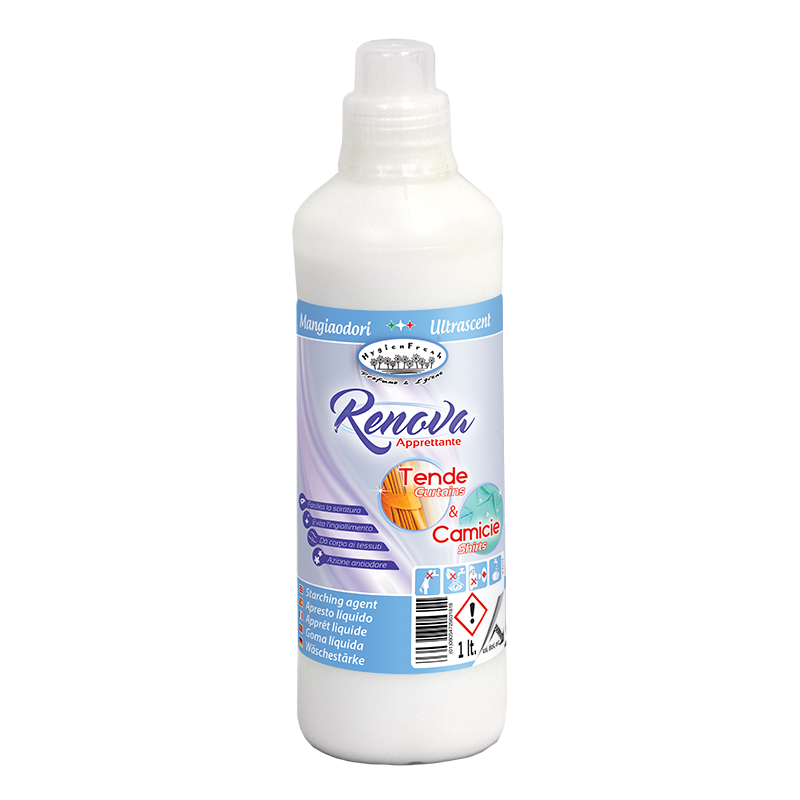 |
APRETEX • 2x5kg Liquid starching agent containing an emulsion of synthetic resins. To be used only when soaking or washing clothes by hand. ◦ It repairs fabrics. |
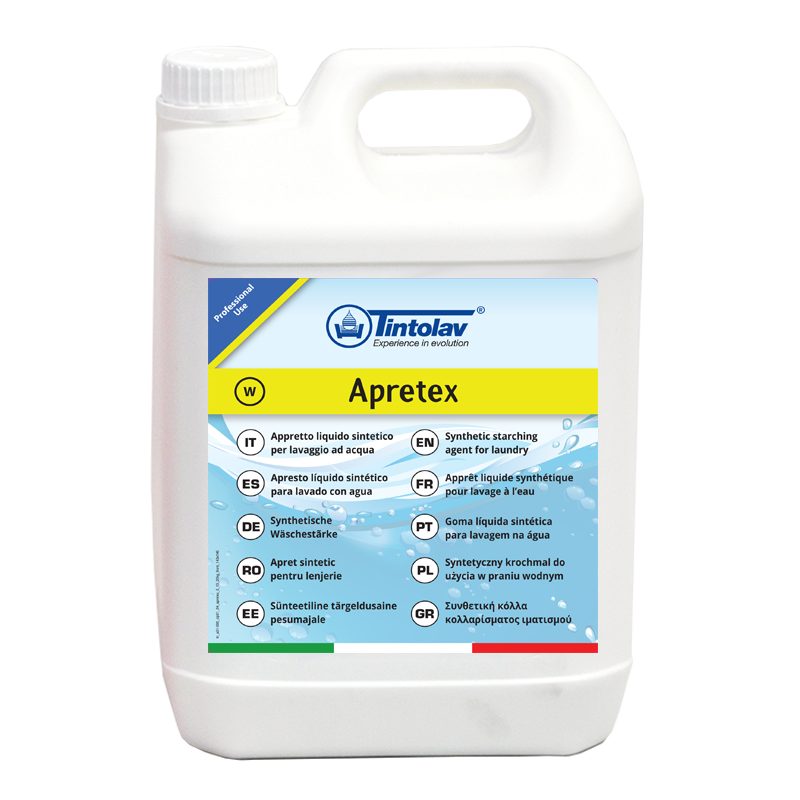 |
RENOVA • 1Lt Concentrated liquid starch containing synthetic resins. It can be used both in the washing machine and when washing by hand. ◦ It repairs fabrics, by stiffening them and giving volume to fibres. |
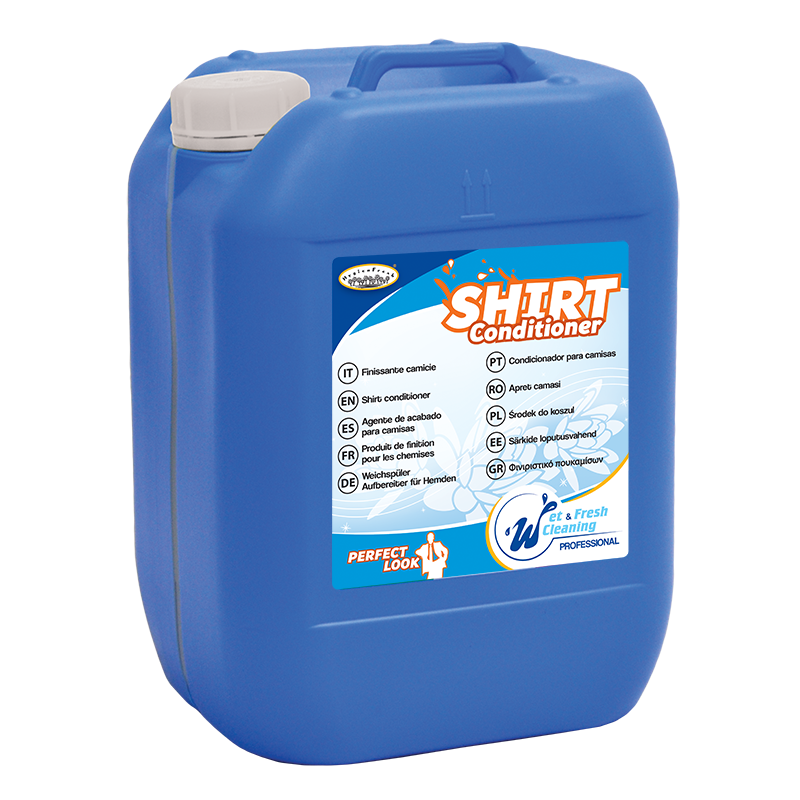 |
SHIRT CONDITIONER • 10kg Finishing agent containing synthetic resins for shirts with starching effect and “Perfect Look” system. ◦ “Perfect Look” effect: for a starched and brightly coloured shirt. |
WATERPROOFING ADDITIVES
They give waterproofing properties (hydrophobic and water-repellent) or “anti-stain” (oil-repellent) to the fabrics.
The water-proofing properties are usually given by synthetic hydrocarbon or silicone resins, whereas for the anti-stain and oil-repellent effect it is necessary to resort to fluoride-containing resins.
These additives may need a final thermal treatment to be able to form a reticular structure and take effect. Fluoride-containing resins usually need a thermal treatment, whereas some innovative silicone and/or hydrocarbon resins no longer need these treatments, thus making it possible to use these additives also on fabrics that cannot be put in the desiccator.
To make this treatment easier, it’s better to optimize the washing cycle and follow some simple tips.
DR. CONEDERA SUGGESTS → Use these additives in the last rinse and with a delicate spin cycle, set between 400 and 600 rpm. Avoid using softeners or other additives in the last rinse, because they could affect the action of the water-proofing additive. In the phase before the last rinse, usually in the second to last rinse, it is advisable to dose 2-4 ml of acetic acid, to eliminate all the possible residues of detergent, which could prevent the fabric from absorbing the water-proofing agents.
Adding this type of additive to the wash makes the fabrics water-proof but their breathability is maintained. This feature is ideal for workwear, sportswear, tablecloths and curtains.
An innovative use of these additives is related to tablecloths, to avoid food stains and above all wine stains, to make the life of fabrics longer and make cleaning them easier.
TINTOLAV has developed:
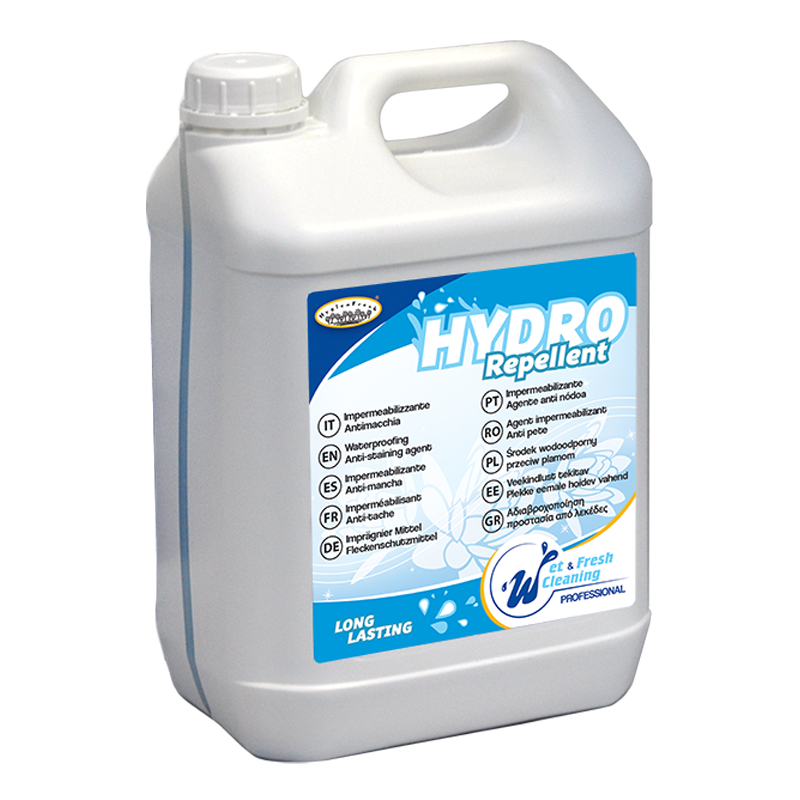 |
HYDRO REPELLENT • 2x5kg Water-proofing agent with nano-technologies that are effective at low temperatures. ◦ Water-proofing effect without the use of high temperatures. |
ANTI-TRANSFER ADDITIVES
These additives prevent colour transfer during the washing cycle, thus avoiding the re-deposition of colour on the fibres.
These additives usually contain innovative polymers and molecules that work and interact directly with colourants and their chemical composition. To solve the problem of colour transfer, it is possible to act in three different moments:
• Before the wash → With a colour-fixing treatment.
• During the wash → With an additive that “blocks and avoids” colour transfer.
• After the wash (after colour transfer) → An additive that eliminates the transferred colour.
DR. CONEDERA SUGGESTS → When washing very colourful garments or new brightly coloured clothes, it is advisable to wash them separately. Colourful clothes should be washed at low temperatures (max 40°C), because heat increases the solubility of colourants in the water. These colourants could transfer on other garments and reduce the brightness of the fabric. Anti-transfer additives must be added in the main wash with the detergent and also in the pre-wash, if there is one. In case of very colourful fabrics or that loose colour it is advisable to use a smaller quantity also in the rinses (reduce by half the dose you used in the main wash).
TINTOLAV has developed:
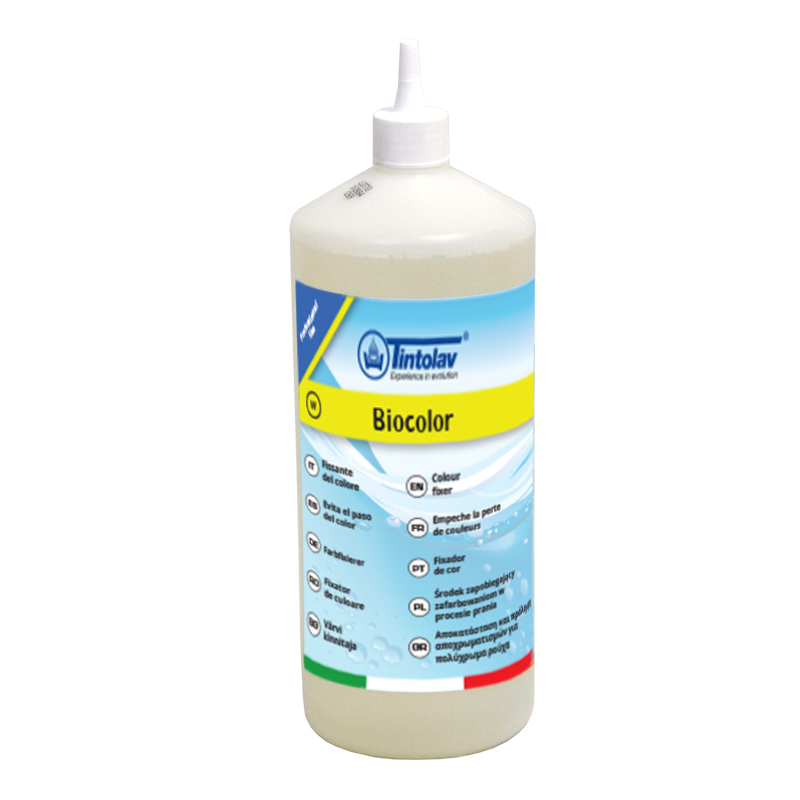 |
BIOCOLOR • 1lt Colour-fixing and anti-deposition agent. Double action on the colour: it prevents colours from transferring during the wash and in case of washing mistakes and colour transfer, to remedy the damage by eliminating the colour transferred. ◦ It prevents colour transfer during the washing cycle. |
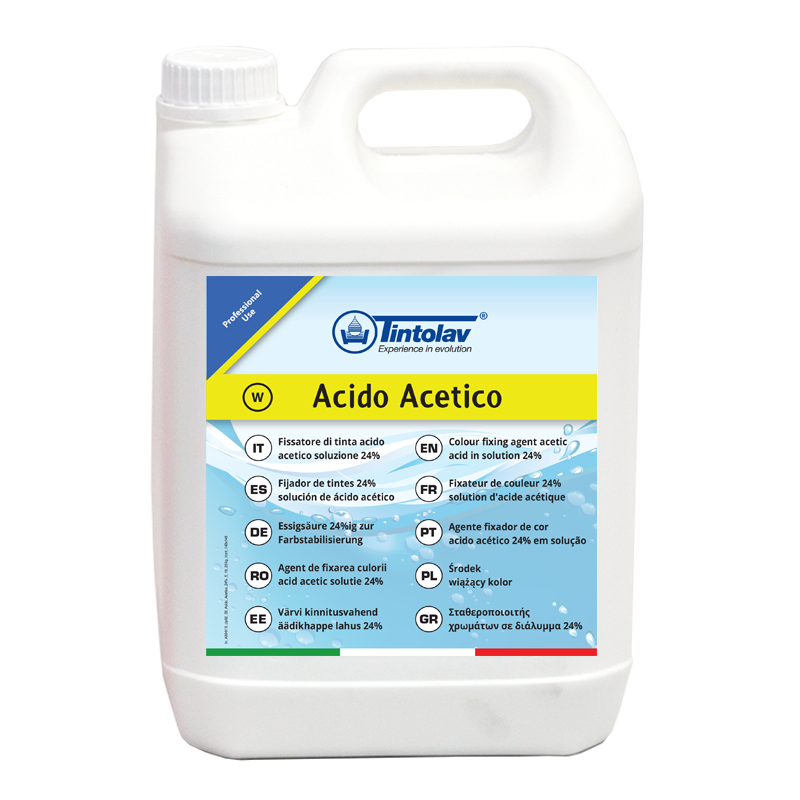 |
ACIDO ACETICO 24% • 2x5kg Neutralising and colour-fixing agent for laundry. It can be used as pre-treatment for colourful fabrics to fix colours before the wash. ◦ It is suitable for the treatment of colourful precious carpets, to avoid problems of colour transfer and loss of brightness. |














